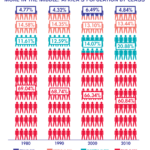There is great potential for innovative financing in South Africa. As the country has moved towards middle-income status, donor capital has decreased and the government has become responsible for greater shares of service-delivery spending. Also, citizens are increasingly holding government to account for these services, so provincial and national departments will need to seek out ways to further ensure taxpayer money is spent to greatest effect.
The result of all this is that outcome-based instruments – such as Impact Bonds and Outcome-Based Contracts – hold particular promise in this area. These contracts shift the risk from government to investors and allow effective service providers to further the success of their evidence-based methods. Additionally, private investor interest in social and environmental impact is growing (see → here). So there is a need to find and create impact investment opportunities within South Africa and African countries further north.
But it’s not all full-steam ahead. Despite the increasing demand from public and private sector capital, South Africa faces a shortage of organisations and interventions that are truly scaleable and sustainable. This is partly due to the capacity of the organisations, but partly due to regulation. Why? Because there is currently no local legal structure for social enterprises in place and, furthermore, the regulation around NPOs that seek to earn revenue is restrictive to the point of being punitive.
This leaves impact organisations that want to operate sustainably by earning revenue with very few options. One of these sparse options is to incorporate as an NPO and a for-profit company, which involves high costs and complicated management structures. Another is to incorporate as a for-profit company and access none of the benefits of NPOs. There are many organisations that are working with government to examine how the regulation could change and the Bertha Centre for Social Innovation & Entrepreneurship is supporting this work. If innovative finance is to reach its full potential in South Africa and the continent, this is one of many cumulative shifts that will need to happen first.


